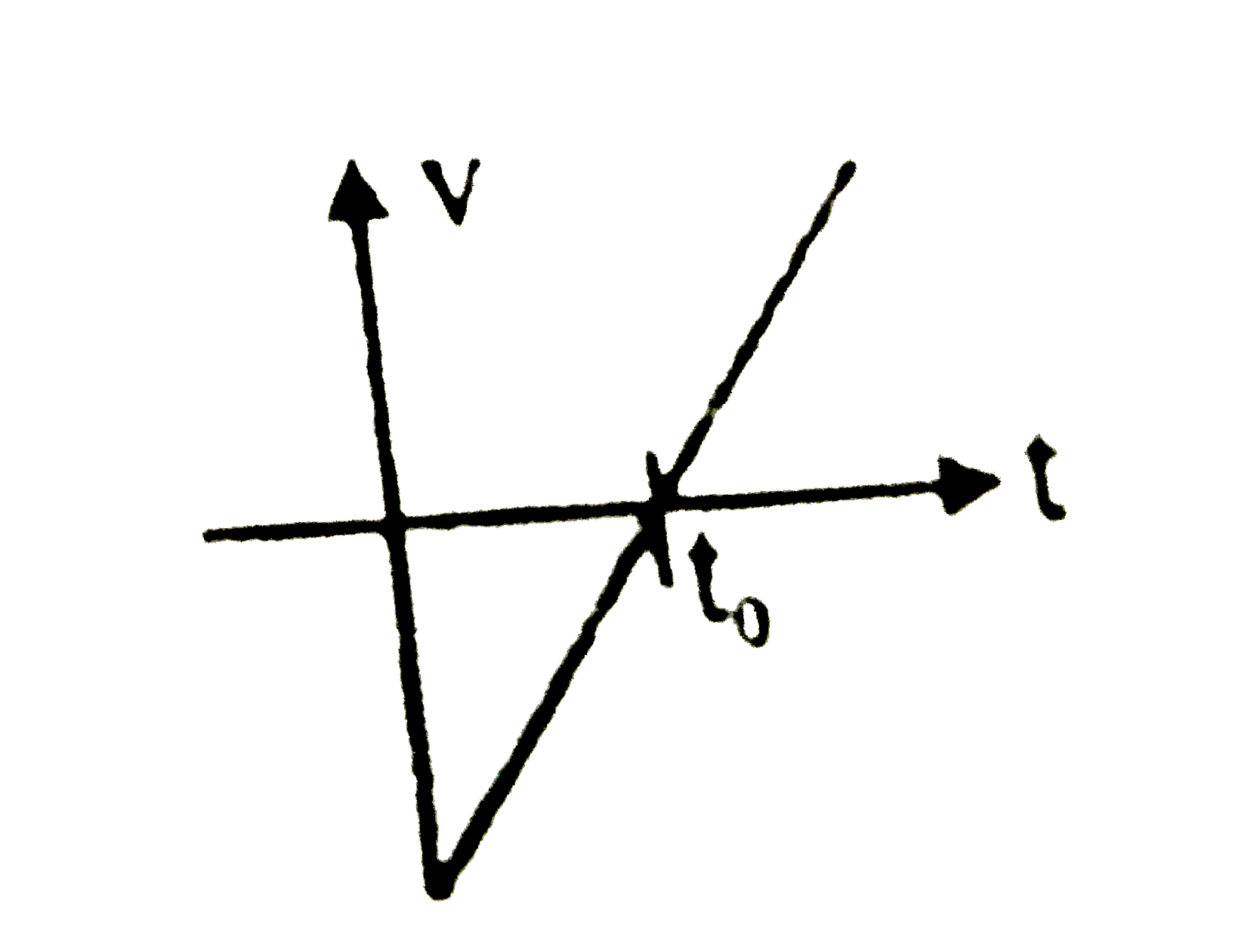Two cars start in a race with velocities u1 and u2 and travel in a straight line with acceleration 'a' and b .If both reach the finish line at the same time,the range of the race is
2(u1−u2)(β−α)2(u1β−u2α)
2(u1−u2)β+α(u1α−u2β)
2(u1−u2)2(β−α)2
2u1u2βα
The correct Answer is:A
To solve the problem, we need to find the range of the race for two cars starting with different initial velocities and accelerations, reaching the finish line at the same time. We will use the equations of motion to derive the solution step by step.
1. Identify the Given Variables:
- Let the initial velocity of the first car be u1.
- Let the initial velocity of the second car be u2.
- Let the acceleration of the first car be a.
- Let the acceleration of the second car be b.
- Let the distance of the race (range) be x.
- Let the time taken to finish the race be t.
2. Write the Equation of Motion for Both Cars:
- For the first car, the equation of motion is:
x=u1t+12at2(Equation 1)
- For the second car, the equation of motion is:
x=u2t+12bt2(Equation 2)
3. Set the Distances Equal:
Since both cars reach the finish line at the same time, we can set the two equations equal to each other:
u1t+12at2=u2t+12bt2
4. Rearranging the Equation:
Rearranging gives us:
u1t−u2t=12bt2−12at2
Simplifying further:
(u1−u2)t=12(b−a)t2
5. Dividing by t (assuming t≠0):
u1−u2=12(b−a)t
From this, we can express t:
t=2(u1−u2)b−a(Equation 3)
6. Substituting t back into one of the equations:
We can substitute t from Equation 3 into Equation 1 to find x:
x=u1(2(u1−u2)b−a)+12a(2(u1−u2)b−a)2
7. Calculating x:
- The first term becomes:
x1=2u1(u1−u2)b−a
- The second term becomes:
x2=12a⋅4(u1−u2)2(b−a)2=2a(u1−u2)2(b−a)2
- Therefore, the total distance x is:
x=2u1(u1−u2)b−a+2a(u1−u2)2(b−a)2
8. Final Expression for the Range:
x=2(u1−u2)b−a(u1+a(u1−u2)b−a)
- Let the initial velocity of the first car be u1.
- Let the initial velocity of the second car be u2.
- Let the acceleration of the first car be a.
- Let the acceleration of the second car be b.
- Let the distance of the race (range) be x.
- Let the time taken to finish the race be t.
- For the first car, the equation of motion is:
x=u1t+12at2(Equation 1)
- For the second car, the equation of motion is:
x=u2t+12bt2(Equation 2)
Since both cars reach the finish line at the same time, we can set the two equations equal to each other:
u1t+12at2=u2t+12bt2
Rearranging gives us:
u1t−u2t=12bt2−12at2
Simplifying further:
(u1−u2)t=12(b−a)t2
u1−u2=12(b−a)t
From this, we can express t:
t=2(u1−u2)b−a(Equation 3)
We can substitute t from Equation 3 into Equation 1 to find x:
x=u1(2(u1−u2)b−a)+12a(2(u1−u2)b−a)2
- The first term becomes:
x1=2u1(u1−u2)b−a
- The second term becomes:
x2=12a⋅4(u1−u2)2(b−a)2=2a(u1−u2)2(b−a)2
- Therefore, the total distance x is:
x=2u1(u1−u2)b−a+2a(u1−u2)2(b−a)2
x=2(u1−u2)b−a(u1+a(u1−u2)b−a)
Topper's Solved these Questions
- APPENDICES (REVISION EXERCISE)BOOK - AAKASH SERIESCHAPTER - APPENDICES (REVISION EXERCISE)EXERCISE - MOTION IN A PLANE
87 Videos
- APPENDICES (REVISION EXERCISE)BOOK - AAKASH SERIESCHAPTER - APPENDICES (REVISION EXERCISE)EXERCISE - LAW OF MOTION
128 Videos
- APPENDICES (REVISION EXERCISE)BOOK - AAKASH SERIESCHAPTER - APPENDICES (REVISION EXERCISE)EXERCISE - LAW OF MOTION
128 Videos
- APPENDICES ( REVISION EXERCISE )BOOK - AAKASH SERIESCHAPTER - APPENDICES ( REVISION EXERCISE )EXERCISE - REVISION EXERCISE (MAGNETISM AND MATTER )
52 Videos
- ATOMSBOOK - AAKASH SERIESCHAPTER - ATOMSEXERCISE - PRACTICE EXERCISE
21 Videos
Similar Questions
Two cars start off to race with velocities 4msand2ms and travel in straight line with uniform accelerations 1msec−2and 2 msec − 2 respectively. If they reach the final point at the same instant, then the length of the path is.
View SolutionTwo cars start off a race with velocities 2m/s and 4m/s travel in straight line with uniform acceleration 2m/s2and1m/s2 respectively. What is the length of the path if they reach the final point at the same time ?
View SolutionAverage velocity of a particle moving in a straight line, with constant acceleration a and initial velocity u in first t seconds is.
View SolutionAverage velocity of a particle moving in a straight line, with constant acceleration a and initial velocity u in first t seconds is.
View SolutionTwo particles of same mass m moving with velocities u1 and u2 collide perfectly inelastically. The loss of energy would be :
View SolutionA particle move with velocity v1 for time t1andv2 for time t2 along a straight line. The magntidue of its average acceleration is
View SolutionA and B participate in a race with acceleration a1anda2 , respectively . A reaches t times earlier than B at finish line and their velocities at finish line are v1andv2 , respectively. If difference between their velocities is v , then find the value of v
View SolutionTwo cars X and Y start off to a race on a straight path with initial velocities of 8 m/s and 5 m/s respectively. Car X moves with uniform acceleration of 1m/s2 and car Y moves with uniform acceleration of 1.1m/s2. If both the cars reach the winning post together find the length of the track.
View SolutionA body starts at t=0 with velcoity u and travels along a straight linge. The body has a constant acceleration(a). Draw the acceleration-time graph from t=0 to t=10s for the following cases:
a. u=8ms−1, a=2s^(-2)<br>b.u=8 ms^(-1),a=−2ms−2
c. u=−8ms−1 ,a=2 ms^(-2)<br>d.u=-8ms^(-1),a=−2ms−2.
View SolutionThe velocity time graph of a particle moving in a straight line is given line is given in the figure. Then starting from t=0, the particle

View Solution
